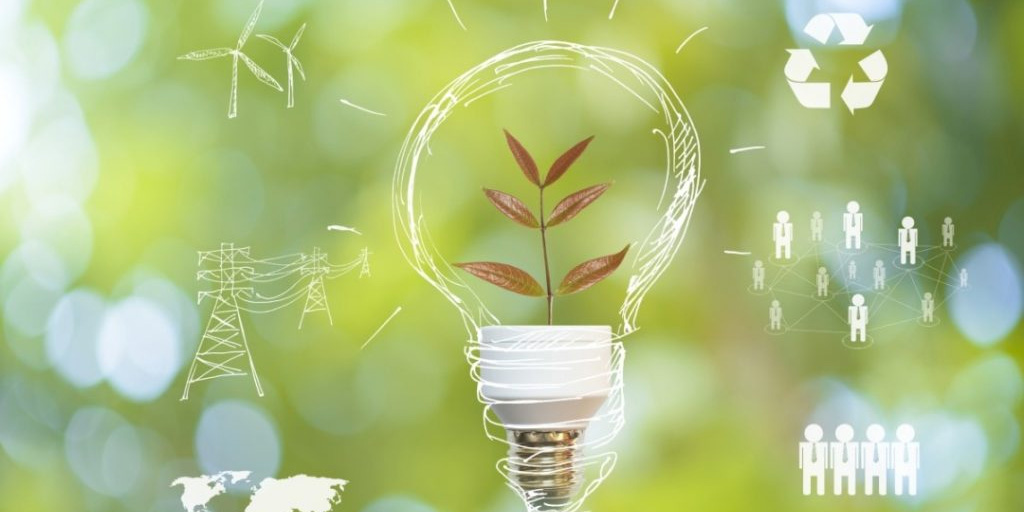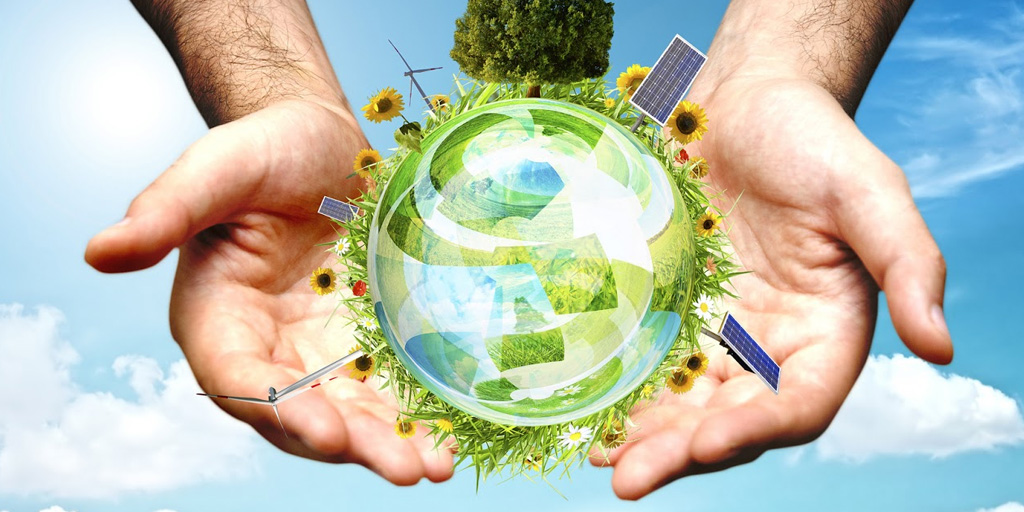
Alternative Energy Sources - energy source installations
We are leaders in the field of energy innovation, specializing in creating autonomous energy systems that provide independence, efficiency, and sustainable development. Our mission is to support enterprises and communities in utilizing renewable energy sources in the most effective way, despite their seasonality and instability.
Our Solutions:
- Autonomous Power Systems:
We offer comprehensive solutions in the form of autonomous power systems that allow for reliable electric power supply from renewable sources such as solar and wind energy. These systems operate independently of the power grid, making them an ideal solution for both home installations and energy-efficient industrial facilities, as well as in remote locations. - Microgrid Systems:
We specialize in designing and implementing microgrid systems, which are independent, local energy systems capable of generating, storing, and managing energy. Our microgrids provide resilience to outages and the ability to integrate various renewable technologies, enhancing the stability and reliability of energy supplies. - Advanced Energy Management:
We implement energy management systems using intelligent algorithms to optimize the production, distribution, and consumption of energy. This allows for maximum utilization of available energy resources while minimizing costs and environmental impact. - Energy Storage Technologies:
We develop and implement innovative energy storage technologies, including battery and hydrogen systems, which allow for the storage of excess energy and its use when production from renewable sources is reduced. Thus, our systems guarantee a continuous energy supply.
Earth’s natural resources are diminishing each year. Non-renewable energy sources, such as bituminous coal, lignite, petroleum, and natural gas, are the main fossil fuels used today for energy production. The energy generated in this way produces pollutants that later penetrate the air, soil, and water. Reducing carbon dioxide emissions is a priority of international environmental policy. Achieving the set goals is possible by replacing fossil fuels with renewable energy sources.
Utilizing renewable energy sources (RES) does not involve long-term deficits because their resources renew in a relatively short time (renewable resources). Such sources include the sun, wind, water (rivers, tides, and sea waves), as well as nuclear energy in a closed fuel cycle, biomass, biogas, biofluids, and biofuels. Renewable energy also includes heat obtained from the earth (geothermal energy), air (aerothermal energy), and water (hydrothermal energy).
Upon conducting a broader analysis of renewable energy sources in terms of emissions and their availability, all RES can be divided into two categories:
- Raw Material-Based: These are sources that utilize combustion processes in energy conversion (nuclear energy, biomass, biogas, and biofuels) or access to which is licensed by large, institutional providers (rivers, tides, and sea waves).
- Phenomenon-Based: These sources utilize natural and generally available phenomena occurring in the environment, such as solar radiation, wind, geothermal, aerothermal, or gravity, in their energy conversion processes.
Alternative Energy Sources (AES) represent a natural way of energy acquisition, independent of large institutional providers, from regularly recurring processes occurring in the environment, used for low-emission energy production.
The main distinction of AES is the systematic replenishment of the energy carrier, derived from the use of physical phenomena occurring in the environment, making them practically inexhaustible.
Renewable energy sources are a subset of alternative energy sources, focusing on renewable energy sources such as solar, wind, water, geothermal, and biomass. Alternative energy sources are a general term that encompasses various energy sources, both renewable and non-renewable, that serve as alternatives to traditional fossil fuels.
The use of alternative energy sources is encapsulated in the concept of sustainable development and is crucial for achieving the energy transformation of the economy, which is intended to ensure a safe and long-term future for humanity. Energy from alternative AES is and will likely continue to be widely used to power industrial plants, public utility facilities, and households, which are simultaneously producers and consumers of energy, thereby generating significant savings on the costs of electric energy consumption and the final energy needed to provide heat and cooling.
With the current state of technology, a range of generators is used to convert energy from alternative energy sources, including small windmills and wind turbines, photovoltaic installations, solar collectors, heat pumps, and Free Cooling systems.

AUTONOMOUS ENERGY SYSTEMS
Sustainable economic development requires the rational and thoughtful use of renewable energy sources. Despite their benefits, renewable sources are characterized by seasonality and significant instability. To increase the efficiency of using the potential of renewable sources, autonomous power systems are utilized.
Autonomous Power Systems (off-grid) are independent power sources that do not require connection to the power grid. Such systems operate in an island mode and are used for reliable electric power supply from renewable sources. Autonomous power systems can be used as an alternative power supply for home installations, as well as for powering energy-efficient industrial installations and in locations beyond the reach of the energy grid.
Autonomous energy systems, also known as microgrids or autonomous microgrids, are small, independent energy systems capable of generating, storing, and managing electricity at a local level. These systems are typically used to power separate areas or buildings and are independent of traditional, centralized power grids.
Key features of autonomous energy systems include:
- Renewable Energy Sources: Autonomous energy systems often utilize renewable sources such as photovoltaic panels, wind turbines, or geothermal energy to generate electricity. This allows for sustainable and eco-friendly energy sources.
- Energy Storage: Autonomous systems are often equipped with batteries or other energy storage devices that allow for the storage of excess energy and its use during periods of low production, such as at night or during periods without sun.
- Energy Management: These systems are equipped with advanced energy management systems that control the generation, distribution, and consumption of energy to optimize its use.
- Resilience to Failures: Autonomous energy systems are often designed with resilience to failures in mind. In the event of a failure in the main power grid, the microgrid can still provide local energy.
- Integrated Technologies: These systems may combine various technologies, such as renewable energy, smart meters, battery management systems, and control systems, to ensure efficient and reliable energy supplies.
Autonomous energy systems are used in various environments, including remote areas, islands, rural areas, industrial and commercial facilities, and residential buildings. They represent an innovative approach to sustainable and independent electricity production, which can contribute to reducing reliance on traditional energy sources and combat climate change.
Autonomous power systems can be interconnected to form a local network that automatically responds to energy shortages at different network nodes by regulating the flow of electricity.
A basic system consists of a primary power source, an additional energy source, an emergency power source, an energy storage device, a weather station, and a regulator. The primary energy source accounts for 60-80% of the generated electricity and may use photovoltaics, small wind turbines, or cogeneration.
The additional source represents 20-40% of the generated electricity delivered from a different type of renewable energy than the primary source. The energy mix depends on the geographical location of the system. The emergency source can be implemented as an on-grid connection or using a generator. The energy storage system consists of batteries or supercapacitors and hydrogen energy storage.
Hydrogen demonstrates high efficiency – it has the highest heat conduction coefficient among all gases. When burned, it also produces about three times more energy than other fuels – gasoline, propane, or methane. However, it has so far played a minor role in Europe’s power sector. As of 2019, it accounted for less than 2% of total energy production, mainly used in refineries, petrochemical plants, and metallurgy. Yet, as the European Union ambitiously shows in its 2050 plans, it could constitute over 25%.
The role of hydrogen in the power system is becoming increasingly important, especially in the context of efforts towards sustainable and clean energy production and the reduction of greenhouse gas emissions.
Hydrogen energy systems can serve several different roles and functions:
- Energy Storage: Hydrogen can serve as an energy carrier that allows for the storage of excess electricity generated from renewable sources, such as solar and wind energy. Hydrogen can store energy in chemical form and deliver it when needed, which allows for the stabilization of electricity supplies and adaptation to changing weather conditions.
- Electricity Generation: Hydrogen can be used in fuel cells to generate electricity. Fuel cells convert hydrogen and oxygen into electrical and thermal energy without emitting harmful substances. This is particularly useful in places where direct generation of energy from renewable sources is not possible, e.g., at night when there is no sun or wind.
- Transport: Hydrogen can be used as an energy carrier in transportation, especially in hydrogen-powered vehicles. Fuel cells powered by hydrogen produce electrical energy that drives the vehicle, contributing to the reduction of exhaust emissions and improving the energy efficiency of transport.
- Industry: Hydrogen can be used as a carrier of heat and energy in the industry. It can be used for production processes, e.g., for metal reduction, and also for generating heat and steam in industrial plants.
- Sustainable Development: Hydrogen is a clean energy source that does not generate carbon dioxide emissions or other harmful substances. Its use contributes to reducing the negative impact of human activity on the natural environment and promotes sustainable development.
With the dynamic increase in demand for renewable energy, there is also an increasing need for its storage, hence the importance of hydrogen as a storage medium. Hydrogen has long been considered one of the most promising substances for chemical energy storage, which can be converted back into thermal and electrical energy. This is not only for large-scale industrial or energy installations but also for the end-user.
The more we talk about hydrogen, the more we recognize its advantage over other alternatives. Currently, there are a variety of energy storage technologies on the market, which differ primarily in terms of capacity, storage time, charging and discharging times, and of course, installation costs. Among them, battery systems dominate. In addition to these, kinetic and thermal energy, compressed air, and pumped-storage power plants are also used. The average energy storage time remains relatively short, as does the capacity of its storage. In the case of batteries, energy is stored on average from a few minutes to a few days, usually within 10 MW. Kinetic energy provides average storage up to 100 MW over several to several minutes. Thermal energy allows average storage of over 100 MW over several to several days. Pumped-storage power plants, on the other hand, even over 1000 MW for up to several days. In contrast, hydrogen and hydrogen fuels, such as ammonia, enable average energy storage up to 1000 MW over several weeks to several months. As some analyses show, with minimal losses, they allow energy storage even over the course of an entire year. This represents a significant advantage of hydrogen in terms of energy security.
On a market dominated by battery systems, there may eventually be a shortage of lithium for battery production, including in LFP (lithium iron phosphate), NMC (lithium nickel manganese cobalt oxide), LCO (lithium cobalt oxide), or LMO (lithium manganese oxide) technologies. The demand for this raw material is steadily increasing, partly due to the development of electromobility. As experts emphasize, with the current production of batteries resulting from current demand (96 million vehicles in 2018), the resource estimated at 40 million tons may run out within the next 300 years. And that’s an optimistic scenario. With estimated resources at the level of 11 million tons, the time to exhaust these deposits is a prospect of the next 100 years.
Hydrogen production from RES uses the electrolysis method. It involves separating water under the influence of electric current into hydrogen and oxygen. In this way, we obtain zero-emission green hydrogen, which we can use directly or store for later use, or convert back into electrical energy.
Currently, there are several hydrogen storage technologies available, which are constantly being improved to ensure the highest effectiveness of hydrogen storage with its specific physicochemical properties, thus ensuring user safety. Hydrogen can be stored in specially adapted pressure vessels (compressed and liquefied), in post-mining salt caverns (compressed and stored on an industrial scale), in hydrogen-rich chemical compounds, in metal hydrides, and in porous substances.
Reprocessing hydrogen into energy is possible thanks to hydrogen fuel cells. This is a much more efficient method of processing hydrogen than, for example, its direct combustion. Its efficiency currently stands at about 60% (electricity), and the remaining 40% is heat.
One of the most innovative solutions that have emerged recently in the field of electricity generation and storage from renewable energy sources is the concept based on the use of a Zero-Emission Power Plant (ZEPP). It can be used for the conversion of useful electrical energy, in autonomous power systems and hydrogen production using an electrolyzer from large-scale installations of renewable and alternative energy sources, and also for further energy distribution or storage. By investing in this area, we want to contribute to meeting the needs of cities, municipalities, companies, and end-users related to the energy and climate transformation.







